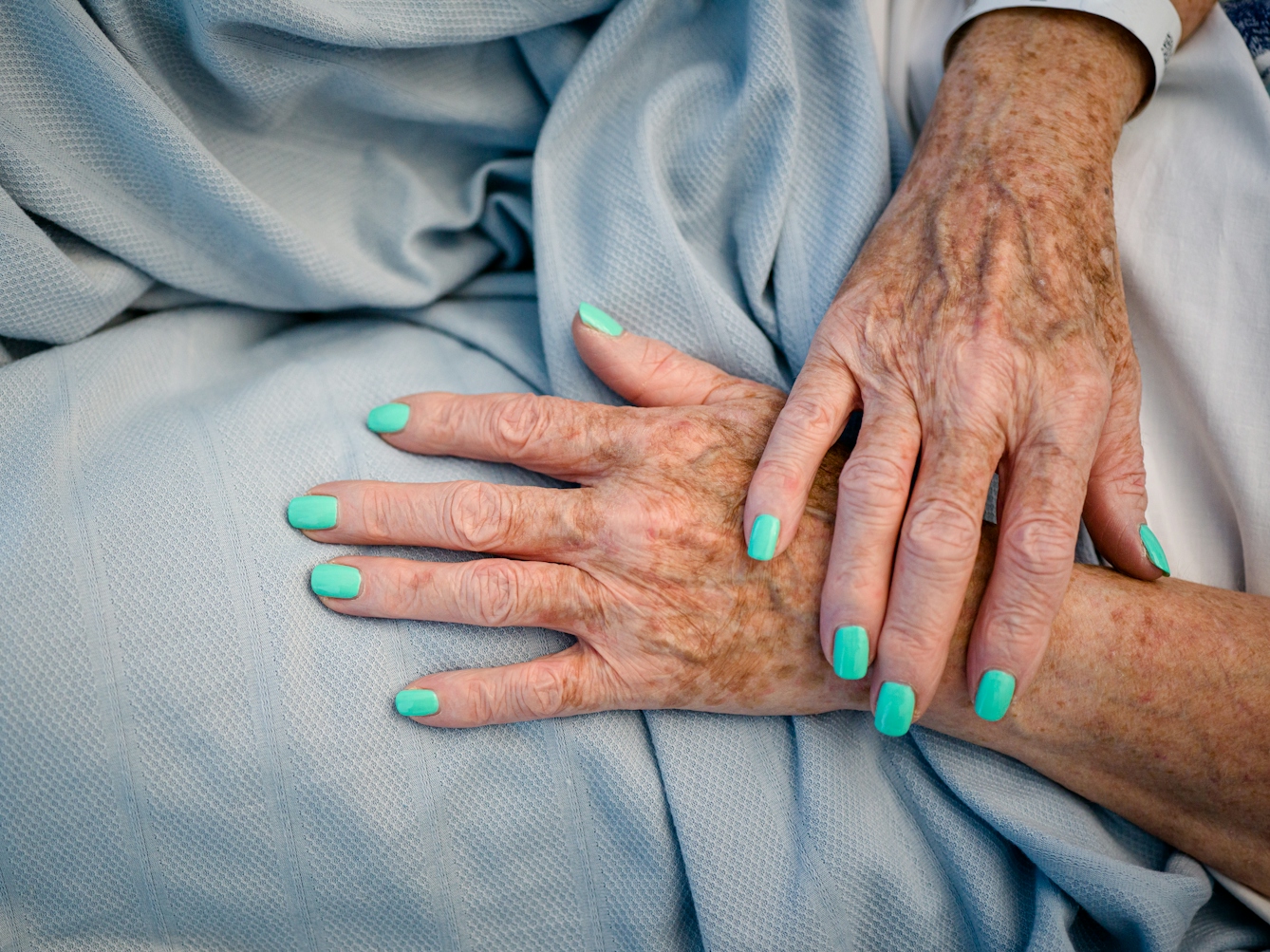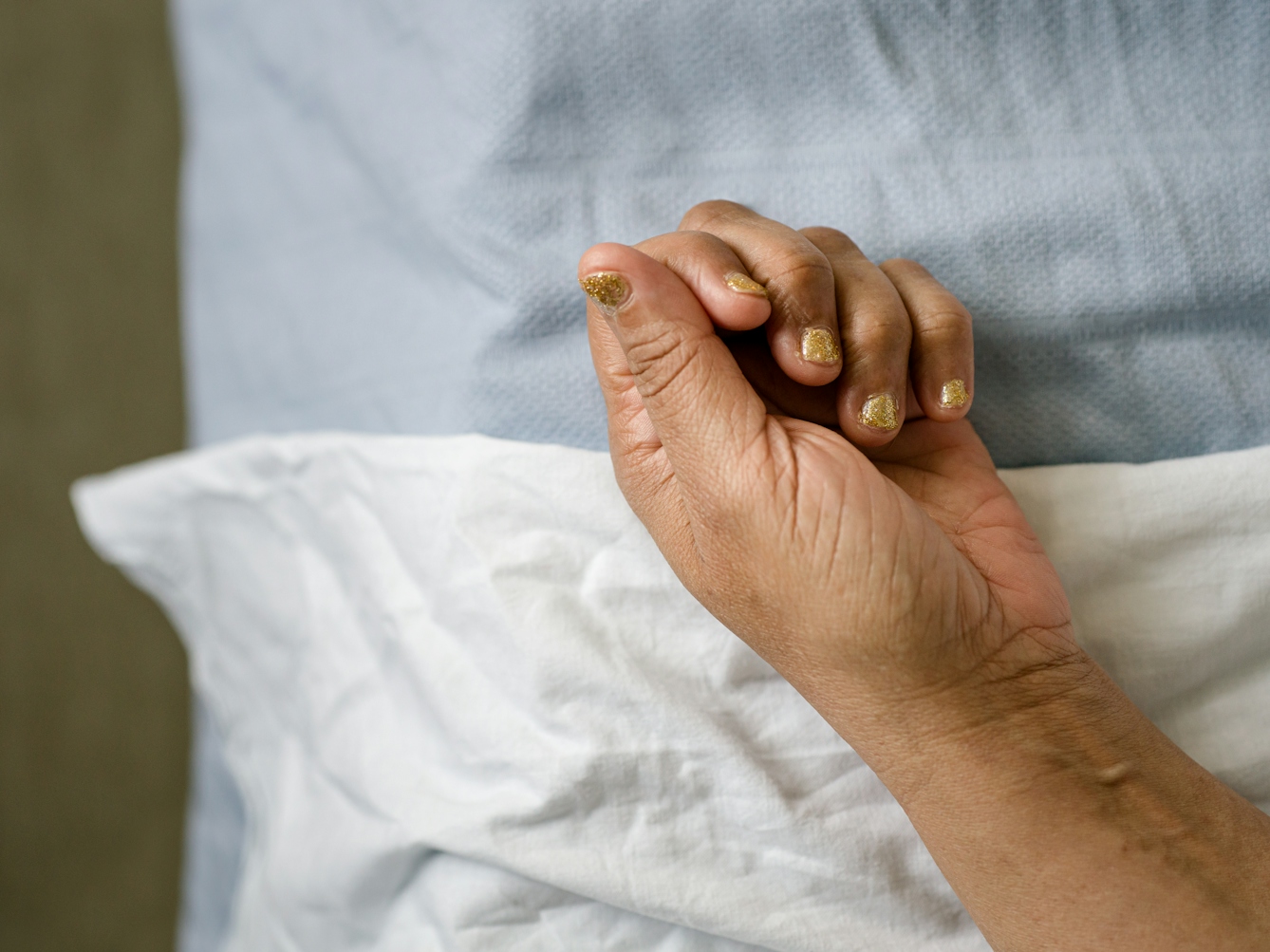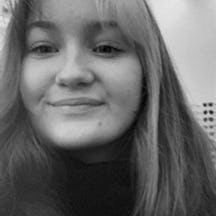Volunteering in a hospital, a young student was worried she might be unwelcome or in the way. But the intimacy of her chosen therapy – painting patients’ nails – invited conversation, the revelation of hidden stories, or sometimes simply a companionable silence.

It was nearly two years ago that I became a volunteer in the hospital. It was, and still is, a common path for university students like me who wanted to go on to study medicine. I didn’t know what to expect, but I was keen to finally have something to add to my CV.
During training we were shown the various uniforms of the ward staff, a hierarchy in clothing form. We were immediately considered contributing members of the hospital team and our enthusiastic manager was quick to instil in us the knowledge that we were “an extra pair of hands” and a listening ear: valuable services the often overburdened medical staff couldn’t always provide.
On the first day we were sent into the wards in groups, wearing bright-raspberry T-shirts with name badges, clutching bags of newspapers and boredom-busting activities. I felt painfully out of place, conscious that the ward staff had endured years of training to earn their place there. They worked with energy and efficiency.

‘Mint’ by Italian cosmetics company KIKO Milano.
At 19, my A-level biology and bag of colouring-in books seemed like an unworthy contribution to the serious business of healthcare. I half expected them to ignore me, or worse, question whether my work there was even appropriate. If they had, I wouldn't have had an answer.
A small but colourful rebellion
Then came the opportunity to start a patient-engagement project. Other volunteers had run projects ranging from origami classes to personalised jukebox services to massages. I decided to run a nail-painting service. If nothing else, it would offer patients the chance for a quick chat and a welcome contrast to the bland uniformity of hospital gowns.
There is something refreshingly rebellious about an elderly lady in an ill-fitting hospital gown showing off her daring red nails to the nursing assistants. Patients are not allowed to wear nail polish during surgery, so having their nails painted was often helpful in restoring some sense of post-operative identity. The necessary hand-to-hand contact involved in the process of painting also lent a welcome intimacy to the service. In these moments, many patients shared with me their reflections on health, life and mortality. Others silently seized the opportunity to say nothing at all.

‘Majestic Sparkle’ from the Barry M range.
One lady confessed to me that she should have told her husband how much he meant to her before he died, because she wasn’t sure he knew.
I have learned that people don’t mince their words when they’re very ill. Small talk is limited. One lady in the neurological hospital confessed to me that she should have told her husband how much he meant to her before he died, because she wasn’t sure he knew. Another patient in the gynaecology ward, facing her seventh surgery, told me the heart-wrenching story of her battle with endometriosis – a struggle slowly forcing her to accept she would never have children.
Hidden in the hands
Historically, hands have been important for diagnosis. Doctors are encouraged to use the handshake as the commencement of the diagnostic process, looking for telling symptoms like clamminess or jerkiness. Often, a closer examination of the hand can lead to several diagnoses, including that of liver disease, as indicated by the Terry’s nails sign, where the half-moon disappears and the nail goes almost wholly white. Clubbed nails, caused by an increase in the soft tissue under the nails, changing their appearance, can suggest lung disease.

‘Elegant’ by Istanbul-based manufacturer Gabrini.
I’ve encountered hands of all sorts since the project began: those swollen by oedema, with nails hidden under puffy skin; hands with missing fingers; hands withered by arthritis and frozen into immovable, clenched fists; hands that tremble with Parkinson’s; or nails crusted with blood from the trauma that caused the admission.
I’ve also witnessed signs of a more personal type: wedding rings worn for spouses long passed, blisters and callouses from years of gruelling manual work, or brown stains from decades-long smoking habits. Sometimes I would encounter hands that mirrored my own, nails bitten and scraggly from nervous tension. I learned to use them to my advantage, boldly presenting them to patients often too embarrassed to show me their own, as an example that I too had failed to practice self-care. Finding such basic common ground helped me to connect with the person behind the patient.

‘Aurora’ by Mavala Switzerland.
Today I no longer feel like an unwelcome stranger at the hospital, a student only here for something to put on their CV. Seeing other volunteers brighten the day of a patient, and the generous nature of the staff has done much to change this feeling. And while the experience has raised new challenges, my fears from that first day have never materialised. A patient has never questioned the appropriateness of my presence, or ignored me. No matter how ill, they always manage to utter a small “not right now, dear” or a tired smile and shake of the head.
Before coming to study in London I was told that living in such a big city could be lonely and impersonal. The hospital has become a surprising shelter from such isolation, providing a sense of belonging that might otherwise have been absent. Staff from over 120 countries work in a building that is filled with an abundance of examples of the very best things about people.
When I feel anxious about my future, I return for comfort to my belief in the acts of kindness, big and small, taking place daily across the NHS.
About the contributors
Ella Nørgaard Morton
Ella is an intern in the Digital Editorial department at Wellcome Collection. She studies Human Sciences at university in London. Hobbies include being bad at yoga and reading books about medicine.
Thomas S G Farnetti
Thomas is a London-based photographer working for Wellcome. He thrives when collaborating on projects and visual stories. He hails from Italy via the North East of England.

